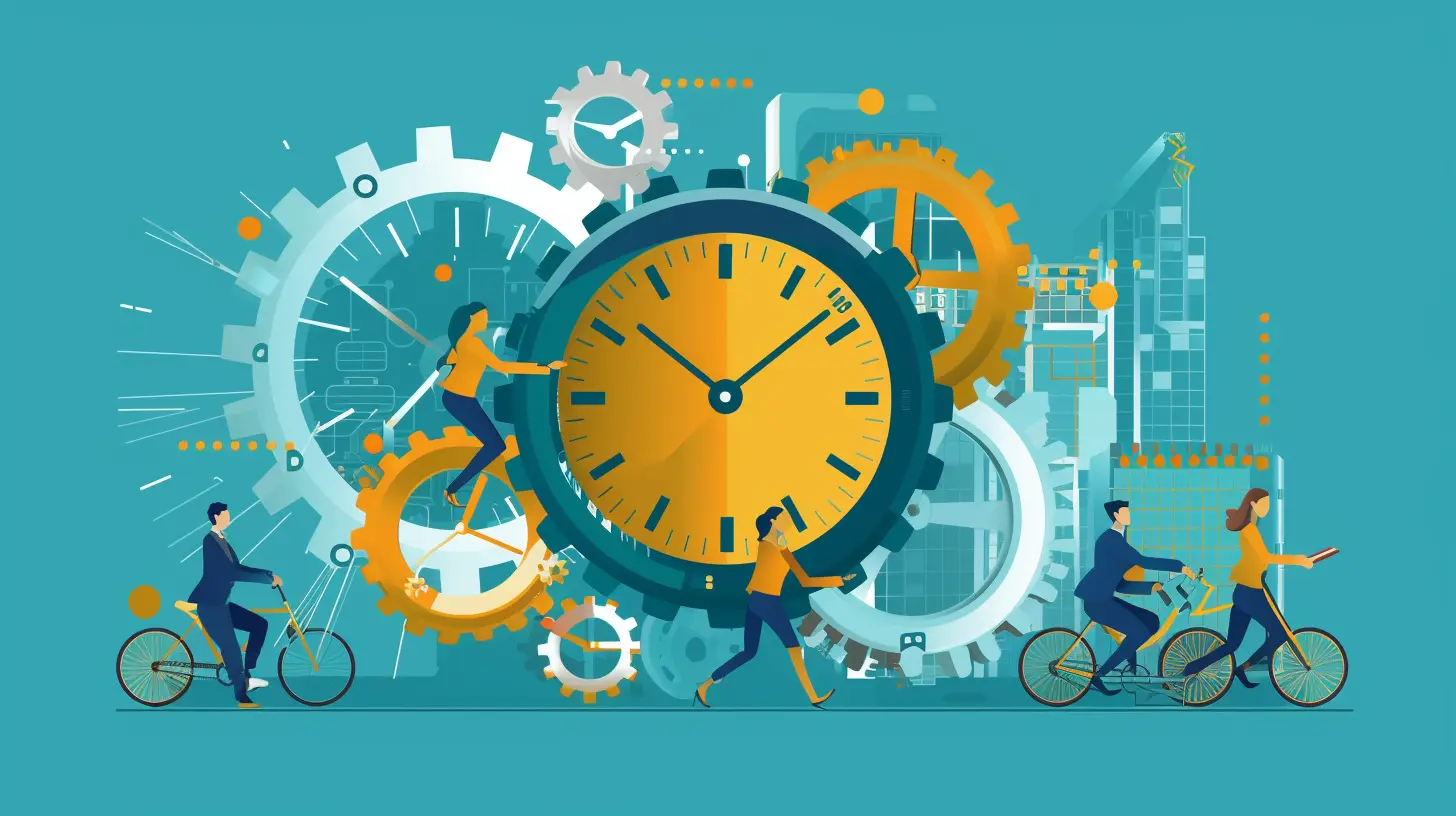The Impact of Loading Speed on Your Website’s SEO
25 August 2025
Let’s have a moment of honesty here. How many times have you clicked on a website, waited a few seconds, and then thought, “Nope, I don’t have time for this,” and hit the back button? Frustrating, right? Well, guess what? Your website visitors feel the same way. And when they bounce because of slow loading times, your SEO performance takes a hit.
In today’s fast-paced world, website loading speed isn’t just important—it’s critical. It affects everything from how users interact with your site to where you rank on Google. So, let’s dive into why loading speed is such a big deal for your website’s SEO and how you can optimize it to keep both your users and search engines happy.

Why Loading Speed Matters More Than Ever
You’ve probably heard the phrase, “First impressions are everything,” about a million times. Well, on the internet, the first impression your website gives off is its loading speed. If your site doesn’t load quickly, your visitors might never stick around long enough to see what you have to offer.Here’s the kicker: Google agrees. The search engine giant has confirmed that loading speed is a ranking factor. Yeah, you read that right—your site’s speed directly influences your position in search engine results pages (SERPs). The faster your site, the better your chances of climbing up the rankings. And don’t forget, it’s not just about search engines; improving loading speeds improves the overall user experience too.
The Numbers Don’t Lie
To really hammer the point home, let’s look at some stats:- 53% of mobile users will leave a website if it takes more than 3 seconds to load.
- Just a 1-second delay in loading time can reduce conversions by 7%.
- Websites that load in under 2 seconds have the lowest bounce rates.
Crazy, right? It’s like the difference between walking into a lively party where people greet you at the door versus stepping into a waiting room with tumbleweeds rolling by.
But why does Google care so much about speed? It’s simple: they want to provide a seamless experience for their users. If your site is slow, Google assumes its visitors won’t have a good time, which hurts your SEO. 
The Relationship Between Loading Speed and SEO
It’s time to connect the dots. How exactly does loading speed impact your SEO rankings? There are a few key ways:1. Crawling and Indexing
Search engines use bots (aka “crawlers”) to scan and index your website. This process helps them understand what your site is all about. If your pages load slowly, search engine bots may spend less time crawling your site, which means fewer pages get indexed. Fewer indexed pages = less visibility online.Think of it like this: Imagine a librarian is trying to catalog books, but the books are buried in stacks of slow-loading paperwork. Frustrated, the librarian leaves before finishing the job. That’s essentially what happens when search bots encounter slow-loading pages.
2. Bounce Rate and User Engagement
Google doesn’t just look at how fast your site loads; it also tracks how visitors interact with your site. If visitors click on your page and then bounce right back to the search results, Google takes it as a sign that your site wasn’t helpful. A high bounce rate signals poor user experience, which can drag your rankings down.And guess what’s one of the main reasons users bounce? Yep—slow loading times. The quicker your site loads, the more likely visitors are to stick around, browse, and interact with your content.
3. Core Web Vitals
Google introduced Core Web Vitals as part of their ranking algorithm, and loading speed is a major player here. Core Web Vitals focus on three main aspects of user experience:- Largest Contentful Paint (LCP): How long it takes for the main content of your page to load.
- First Input Delay (FID): How responsive your site is to user actions.
- Cumulative Layout Shift (CLS): How stable your site’s layout is as it loads (no one likes unexpected shifts!).
If your Core Web Vitals are off, your rankings could take a nosedive. 
How to Improve Your Website’s Loading Speed
Alright, now that we’ve covered why loading speed is so important, let’s dive into how you can improve it. And don’t worry, you don’t need to be a tech wizard to make some of these changes!1. Optimize Images
Large image files can be a major drag on your site’s speed. Compress your images using tools like TinyPNG or ImageOptim without sacrificing quality. And always use the right file format—JPEG for photographs and PNG for graphics with transparent backgrounds.2. Enable Browser Caching
Browser caching allows your website to store certain files on a visitor’s device so they don’t have to keep downloading them every time they visit. It’s like saving your favorite restaurant’s menu so you don’t have to read it over and over again.3. Minify CSS, JavaScript, and HTML
Complex code can slow down your site. Minifying your code (basically, removing unnecessary characters and spaces) can help. Tools like Google’s PageSpeed Insights often suggest this as a quick fix.4. Use a Content Delivery Network (CDN)
A CDN stores copies of your website on multiple servers around the globe. When someone visits your site, the CDN delivers it from the server closest to them, reducing loading time. Think of a CDN as giving your website a faster shortcut to your visitors.5. Upgrade Your Web Hosting
If you’re still on a shared hosting plan, it might be time to upgrade to a VPS (Virtual Private Server) or dedicated hosting. Shared hosting can slow your site down because you’re competing with other websites for server resources.6. Implement Lazy Loading
Lazy loading ensures that images and videos only load when a user scrolls to them. This way, your site loads faster, and users can start interacting with it immediately.7. Enable Compression
Gzip compression can significantly reduce the size of your website’s files, making them quicker to transfer. Most modern web servers, like Apache or NGINX, have settings to enable this.8. Monitor and Test Regularly
You can’t fix what you don’t know is broken, right? Use tools like Google’s PageSpeed Insights, GTmetrix, or Pingdom to analyze your site’s loading speed. These tools often provide actionable recommendations tailored to your website.
Final Thoughts
Your website’s loading speed isn’t just a technical issue—it’s a user experience issue, an SEO issue, and, ultimately, a business issue. A slow site can cost you in rankings, conversions, and even credibility.But here’s the good news: optimizing your site’s speed doesn’t have to be overwhelming. Start small—compress your images, enable caching, or switch to a faster host. These little changes can make a world of difference, and your users (and Google) will thank you for it.
Remember, the digital world waits for no one. When it comes to loading speed, every second counts. So, don’t let a sluggish site hold you back—make speed your secret weapon for SEO success.
all images in this post were generated using AI tools
Category:
Digital MarketingAuthor:

Baylor McFarlin
Discussion
rate this article
1 comments
Drew Newman
Loading speed significantly influences SEO rankings, as search engines prioritize user experience. A faster website enhances visitor retention, reduces bounce rates, and ultimately drives higher conversion rates. Prioritizing speed optimization is essential for maintaining competitive digital visibility and engagement.
September 9, 2025 at 11:42 AM

Baylor McFarlin
Absolutely! Loading speed is crucial for SEO, as it directly affects user experience and engagement. Prioritizing speed optimization is key to improving rankings and conversions.


